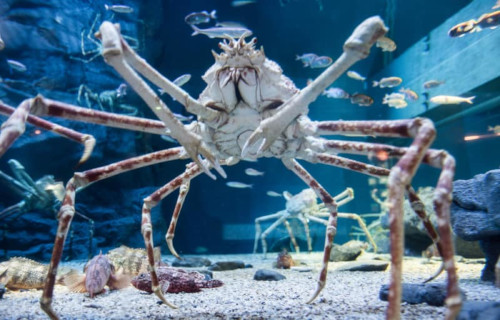
CCL: http://bit.ly/2xLZ0ap
We hope that you enjoy this article detailing 7 Awe-Inspiring Ocean Crustaceans. These fascinating creatures never cease to amaze and captivate us. The variety in which they exist is astounding. Obviously, these few comprise barely the tiniest handful of the more than 30,000 recognized species of crustacean in the world, both on land and in the waters of the world. Perhaps learning of these few will whet your appetite for more.
Mantis Shrimp
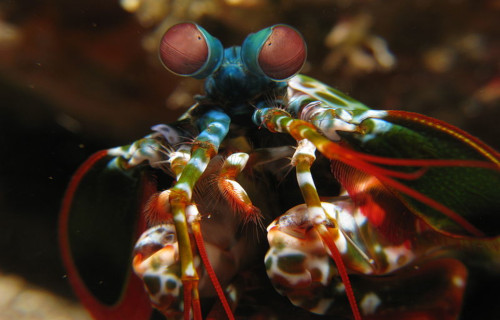
CCL: https://bit.ly/2DuliCV
Mantis Shrimp Facts
- Leading off our selections of 7 Awe-Inspiring Ocean Crustaceans is the fascinating invertebrate known as the Mantis Shrimp.
- Firstly, the term actually refers to any of 451 species in the suborder of Unipeltata. However, all of these remain highly aggressive species of marine crustaceans.
- Further, the various members of this suborder belong to one of two classifications. These classifications are based on the manner in which the species attacks. Each species, therefore, gets classified as either a spearer or smasher.
- Rather surprisingly, perhaps, the animal often ranks as one of the most important predators in its given region. Yet despite this, the amazing creature still remains comparatively poorly understood.
- For the moment, all species considered Mantis Shrimp appear to have stable populations. Therefore, the IUCN currently has no listing for any of them. But, that could potentially change as a result of the effects of climate change.
Mantis Shrimp Physical Description
Quite understandably, given the large number of types of Mantis Shrimp, physical differences exist. However, certain natural traits remain consistent among all recognized species in the fabulous suborder.
Firstly, the various species come in a variety of colors. Secondly, these range from a drab brown to bright neon-like colors. However, the great majority of varieties display the highly colorful patterns.
Additionally, sizes also naturally vary among the different forms. But, on average, most grow to around 12 in (30 cm) in length. However, exceptional specimens sometimes reach 15 in (38 cm).
- Kingdom: Animalia
- Phylum: Arthropoda
- Class: Malacostraca
- Order: Stomatopoda
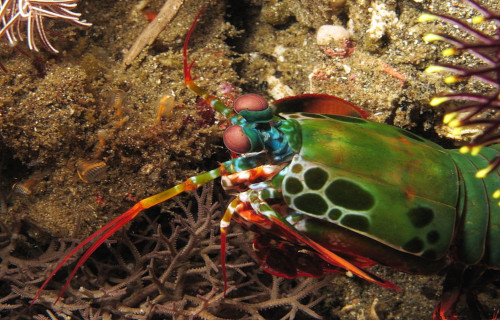
CCL: https://bit.ly/1p2b8Ke
Mantis Shrimp Distribution, Habitat, and Ecology
Most notably, the various types of the incredible Mantis Shrimp inhabit nearly all temperate and tropical waters. But, the greatest concentration of both species and numbers appear between Hawaii and eastern Africa.
Further, the two different classifications of Mantis Shrimp prefer different types of habitat. The spearers prefer areas of soft sediment. Meanwhile, the smashers typically prefer either hard ground or regions of coral. Yet, both create burrows.
Varying species may be also either nocturnal, diurnal, or crepuscular. Unlike most crustaceans, it will hunt and pursue prey, if none comes within reach of its hiding place.
Though fewer in number, the smashers are the most impressive group. In proportion their body size, they possess the fastest strike of any known creature on earth. These amazing shrimp remain capable of striking with a force and velocity approximately equal to that of a 22 caliber bullet.
Their prey is actually struck twice with a single strike. The first is the physical impact. Secondly comes the shock wave resulting from the velocity of the strike. The effect becomes devastating.
Skeleton Shrimp
Terrible Claw Lobster Facts
- The next of our selections of 7 Awe-Inspiring Ocean Crustaceans is the aptly-named Skeleton Shrimp.
- It must be pointed out that the descriptive term for the creature actually serves as the collective common name for an entire Family of arthropods. All members of the remarkable group, as the name suggest, evolved as purely marine species.
- It’s also a relatively large group, containing hundreds of separate species. The first official recognition of the Family as such occurred in the year 1814. This took place as a direct result of the work of the English zoologist, William Elford Leach.
- Given its astounding ability to virtually disappear into its surrounding environment, it also has other appropriate common names. Perhaps chief among these alternate, but highly descriptive names, is the applicable term of the ghost shrimp.
- Since the term of Skeleton Shrimp applies to so many different species, the various types naturally have differing statuses. Many of them, unfortunately, presently appear on the Red List of Threatened Species, routinely published by the IUCN.
- Although each species faces varying situations, dangers, and threats, most of them have some in common. One of these would be the danger posed by habitat loss, due to changing conditions in the oceans. The greatest, though, consists of climate change.
Skeleton Shrimp Physical Description
Since the term of Skeleton Shrimp refers to a vast number of different species, physical differences quite obviously exist. Despite that fact, however, many similarities between them naturally also exist, given the genetic relationship they each share.
One of these shared traits is the tendency of most of them to display a strong degree of the physiological trait of sexual dimorphism. In the case of the majority of members of this Family, that characteristic manifests itself in terms of sheer physical size.
The males of most species of these creatures attain a significantly greater size than their female counterparts. Aside from this tendency, the various forms also share one more defining trait. In fact, this characteristic serves as the source of the collective common name.
Each form of the amazing Skeleton Shrimp evolved as highly elongated and thin in shape. These further possess convoluted, twisting shapes to their bodies. Their color patterns, meanwhile, also differ between each of the members of the remarkably evolved Family.
- Kingdom: Animalia
- Phylum: Arthropoda
- Class: Malacostraca
- Order: Amphipoda
- Family: Caprellidae
Skeleton Shrimp Distribution, Habitat, and Ecology
Because so many forms of Skeleton Shrimp exist, the Family as a whole possesses an extraordinary range of habitation. In fact, members of this remarkably evolved group fill all areas of virtually every ocean and sea on the planet with their numbers.
For the moment, the overall global population of this marvelous Amphipod appears to be spread around the planet roughly evenly. Due to this truly cosmopolitan distribution, they quite frequently encounter human presence, though most humans never notice them.
This mainly occurs due to the nature of the choice of habitat most of the species exhibit. The great majority prefer to live in the subtidal waters and low intertidal zones. More specifically, most elect to spend their time in areas of marine plants, mostly eelgrass.
A minor percentage of them, though, do inhabit the greater depths of the oceans. These, however, virtually never interact with humans. Wherever they appear, these creatures developed as omnivores, feeding on protozoans, diatoms, smaller amphipods, and detritus.
Most forms of Skeleton Shrimp further feed as ambush predators, much like praying mantises. Though not frequently preyed on themselves, a few species do consume them occasionally, The majority of their predators consist of shrimp, nudibranches, and jellyfish.
Yeti Crab
Yeti Crab Facts
- Listing third out of our choices for 7 Awe-Inspiring Ocean Crustaceans come the extremely rare Yeti Crab.
- Rather understandably, this highly unusual crustacean bears the common name of Yeti Crab. Bearing the scientific name of Kiwa hirsuta, it also goes by the misleading common name of Yeti Lobster
- Researchers from the Monterey Bay Aquarium Research Institute first discovered it in 2005. Further, the fascinating animal now ranks as one of the most unusual types of crustaceans known to man
- It also has highly specific habitat requirements, which makes it of great interest to many researchers. Additionally, the nature of this creature remains so unique that it spurred the creation of an entirely new Family.
- Lastly, the IUCN does not yet have a classification for this animal, due to the lack of sufficient information at this time. Hopefully, more specimens will be discovered, providing more data.
Yeti Crab Physical Description
Regardless of its rather remarkable appearance, the Yeti Crab remains somewhat smaller than some related species. That’s because mature individuals typically attain an overall body length of about 6 in (15 cm), with no discernible sexual dimorphism.
Its most noticeable feature, however, remains the thick covering of silky hair-like
In addition, its eyes remain quite tiny, and without pigmentation. Many experts understandably believe the creature to be fully blind. Given the nature of its habitat, this seems a reasonable assumption.
- Kingdom: Animalia
- Phylum: Arthropoda
- Class: Malacostraca
- Order: Decapoda
- Family: Kiwaidae
- Genus: Kiwa
- Species: K. hirsuta
Yeti Crab Distribution, Habitat, and Ecology
Unfortunately, the truly astounding Yeti Crab appears to only inhabit a highly specific and rather restricted habitat range. To date, however, the only known populations of this impressive animal occur along the Pacific-Antarctic Ridge, south of Easter Island.
In addition, there, it exists at the extreme depth of about 7,200 ft (2,200 m). It therefore spends its life in the darkness of the depths. Further, all known individuals live either on or near hydrothermal vents.
Quite naturally, because of its location, researchers still know very little about parts of its life cycle. However, experts believe it to feed on a combination of small animals and epibiotic bacteria.
Pistol Shrimp
Pistol Shrimp Facts
- Next up among our 7 Awe-Inspiring Ocean Crustaceans is the fascinating and unique Pistol Shrimp.
- First of all, the term applies to any of the amazing members of the Alpheidae family of shrimp. Further, this family currently contains an astounding 1,119 recognized species.
- In addition, all members of this family remain characterized by possessing asymmetrical claws. The larger claw in all of these species is capable of generating a loud snapping sound.
- Its common name derives from a unique ability it has. Despite its diminutive stature, the animal remains one of the loudest creatures on earth. Its snapping can reach a volume of as much as 218 decibels.
- Finally, it has few natural predators, for understandable reasons. However, like many other species, it faces potential threats to its existence. The leading danger it faces consists of climate change.
Pistol Shrimp Physical Description
Firstly, the truly awesome Pistol Shrimp typically attains an average length of only about 2 in (5 cm). However, the greatly oversized snapping claw may be as long as half the body length of the shrimp.
Also, the design of the larger claw remains unique among shrimp. That’s because it possesses a pistol-like component which is made of two parts. A special joint allows the hammer part to retract to a right angle position. When released, it creates the characteristic snapping noise.
Furthermore, this larger claw may appear on either arm. While it usually develops on one arm only, if lost, it will regrow on the other arm. Meanwhile, the arm that originally held the larger claw will grow a new, smaller claw.
- Kingdom: Animalia
- Phylum: Arthropoda
- Class: Malacostraca
- Order: Decapoda
- Family: Alpheidae
Pistol Shrimp Distribution, Habitat, and Ecology
Given the number of different species of Pistol Shrimp, its distribution remains virtually worldwide. Most of the various species, but not all, inhabit either tropical or temperate waters.
Further, those varieties that live in the warmer climates most commonly make their homes in regions of coral reef. However, one remarkable species actually lives only in freshwater caves.
Some species have also developed a symbiotic relationship with the goby fish. The two will even share the same protective burrow. The shrimp maintains the burrow. Having better eyesight, the goby fish watches for danger when the pair goes outside the burrow.
Further, the method of sound generation is astonishing. The powerful claw opens so quickly and shuts with such velocity which creates a cavitation bubble. This bubble expands outward rapidly. The outward pressure is what generates the shock wave.
The Pistol Shrimp uses this to hunt for prey. The shock wave is brief, lasting only one millisecond. However, it is powerful enough to kill small fish, or even shatter glass. Groups of these shrimp in a feeding frenzy will actually interfere with the sonar of submarines.
American Lobster
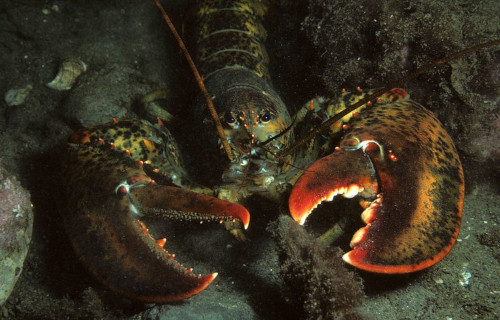
CCL: https://bit.ly/1ryPA8o
American Lobster Facts
- Our fifth selection out of our 7 Awe-Inspiring Ocean Crustaceans is the undisputed heavyweight among them, the American Lobster.
- The amazing American Lobster ranks as the heaviest of all known types of lobster. Not only that, but it also easily ranks as the largest of all known varieties of arthropod in the world.
- According to Guinness World Records, the heaviest crustacean on record is an American Lobster caught off Nova Scotia, Canada. This specimen weighed an incredible 44.4 lb (20.1 kg).
- Further, Thomas Say first identified it as a species in 1817. Its scientific name actually changed several times in the next 20 years. It also goes by several other common names, including the Maine Lobster and Northern Lobster.
- Finally, its numbers, despite being extensively fished, appear to still be sufficient and stable. Therefore, the IUCN presently lists the animal as Least Concern. However, like many species, that could change due to such factors as climate change.
American Lobster Physical Description
Most notably, the incredible American Lobster ranks as a true heavyweight among its kind. That’s because the remarkable variety of crustacean typically attains a weight of about 9 pounds (4.1 kg).
However, individual specimens sometimes weigh as much as an astounding 44 lb (20 kg). But, it has a distinctly compact body shape. As a result, despite the great weight, it averages a length of around 24 inches (61 cm).
In addition, the normal coloring of the animal remains a dark bluish green to greenish brown. That is a mix of yellow, blue, and red pigments. Yet, on rare occasions, other colors present themselves.
- Kingdom: Animalia
- Phylum: Arthropoda
- Class: Malacostraca
- Order: Decapoda
- Family: Nephropidae
- Genus: Homarus
- Species: H. americanus
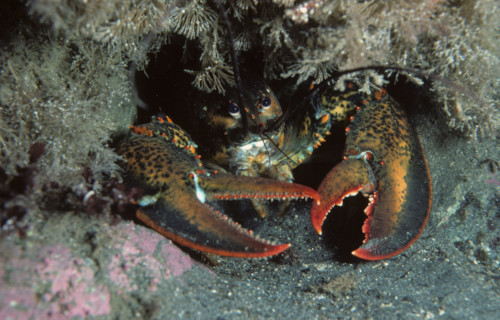
CCL: https://bit.ly/1ryPA8o
American Lobster Distribution, Habitat, and Ecology
The American Lobster only appears to live in a relatively small range, along the Atlantic coast of North America. This is a region spanning Labrador in the north to Cape Hatteras, North Carolina, United States, in the south.
Furthermore, the species typically lives in comparatively shallow regions, at depths of no more than 13 – 164 ft (4 – 50 m). However, scattered populations sometimes live at depths of as much as 1,570 ft (480 m).
But, in both regions, it prefers to inhabit areas with numerous rocks and other such obstructions. That’s because such objects usually offer it a certain degree of protection form its predators.
The animal has a carnivorous diet that can vary from one location to another. But, it usually consists of echinoderms and various small mollusks. Yet, it sometimes also feeds on a variety of crustaceans.
Japanese Spider Crab

CCL: http://bit.ly/2xLZ0ap
Japanese Spider Crab Facts
- This compendium of 7 Awe-Inspiring Ocean Crustaceans would not be complete without the presence of the incredible Japanese Spider Crab.
- Firstly, the astounding creature easily ranks as the largest known living arthropod. However, that specifically applies in reference to its truly prodigious leg span.
- Sadly, this incredible creature inhabits a rather seriously restricted zone of habitation. This limited range therefore renders the crustacean especially vulnerable to numerous threats.
- Further, like most species with such a restricted range of habitation, it remains especially vulnerable to certain factors. These include the effects of both climate change and habitat loss.
- Sadly for it, however, it also faces an additional threat. That extra danger consists of human hunger. Within its native range, this arthropod remains considered a great delicacy.
- Unfortunately, the IUCN has not yet evaluated the status of this particular species.
Japanese Spider Crab Physical Description
Most notably, the shockingly huge Japanese Spider Crab develops a truly mind-boggling leg span. That holds true because this can often reach up to as much as 18 ft (5.5 m) from claw to claw.
Yet, surprisingly enough, the body itself remains rather small in comparison to the legs. The carapace of the remarkable creature typically only attains a relatively tiny diameter of 16 in (40 cm).
But, the species does display a small degree of sexual dimorphism. In this case, the males display slightly longer chelipeds, also known as claws. This trait also occurs in some related species.
In addition, its overall coloring remains primarily a very bright orange. However, multiple white spots generally develop as well, most especially along the out-sized legs. This makes for a striking appearance.
Furthermore, exceptional specimens of the amazing invertebrate sometimes weigh as much as 42 lbs (19 kg). This makes it the second heaviest known arthropod, only exceeded by the American Lobster.
- Kingdom: Animalia
- Phylum: Arthropoda
- Class: Crustacea
- Order: Decapoda
- Family: Inachidae
- Genus: Macrocheira
- Species: M. kaempferi
Japanese Spider Crab Distribution, Habitat, and Ecology
First of all, the amazing Japanese Spider Crab appears to mainly live in a tiny portion of Asia. As its name suggests, it primarily exists in the waters off the southern coasts of the island of Honshu, in Japan.
In addition, rather small and highly isolated populations have also been found in two other locations. These concentrations appear just off the coasts of the Iwate Prefecture, and of Taiwan.
Typically, the truly enormous arthropod inhabits waters at depths ranging from 160 – 1,970 ft (50 – 600 m). Also, individuals most commonly inhabit either holes or vents on the ocean floor.
The Japanese Spider Crab evolved as an omnivore, consuming both plant matter and animals. It also sometimes feeds as a scavenger, seemingly opportunistically. Thus its diet remains highly varied.
Finally, its precise lifespan remains uncertain, yet estimates place it at about 100 years.
Harlequin Shrimp
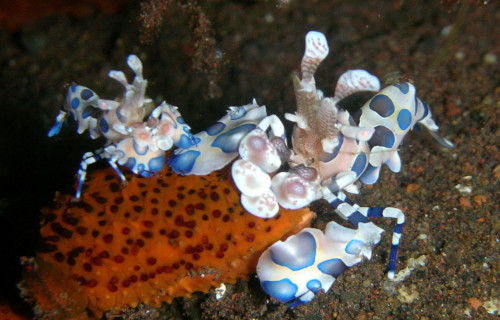
CCL: https://bit.ly/1ryPA8o
Harlequin Shrimp Facts
- The final position on our list of 7 Awe-Inspiring Ocean Crustaceans is occupied by the amazing Harlequin Shrimp.
- First of all, the awesome species is a creature that not even the scientists can agree about. That’s because only some experts divide it into two species. Meanwhile, the majority consider it only one species.
- This debate occurs due to the fact that specimens from its two distinct ranges have different color patterns. However, other than that small difference, both groups remain physically indistinguishable.
- Further, the animal is rather sensitive. Therefore, any changes in temperature, water chemistry and salinity can be detrimental. Even high nitrate or copper levels can negatively affect it.
- As a result, it now faces an increased risk of extinction, due to the effects of climate change. But, for the moment, the IUCN does not yet have a listing of this remarkable creature.
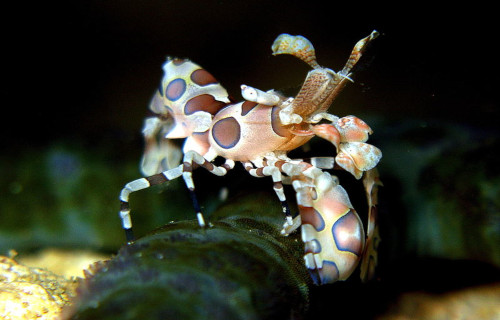
CCL: https://bit.ly/2K0yxJp
Harlequin Shrimp Physical Description
Quite noticeably, the gorgeous Harlequin Shrimp most commonly presents a bright color pattern. Furthermore, this usually consists of a background of either cream color or an off-white. Some scattered spots also appear.
Yet, these spots serve as the source of debate among scientists. That’s because, individuals in one region display red spots. Meanwhile, those inhabiting the other region presents purple spots. Thus the confusion.
However, both groups appear the same otherwise. A typical individual attains a length of about 2 in (5 cm). But, displaying a mild degree of sexual dimorphism, males average slightly larger than females.
- Kingdom: Animalia
- Phylum: Arthropoda
- Class: Malacostraca
- Order: Decapoda
- Family: Hymenoceridae
- Genus: Hymenocera
- Species: H. picta
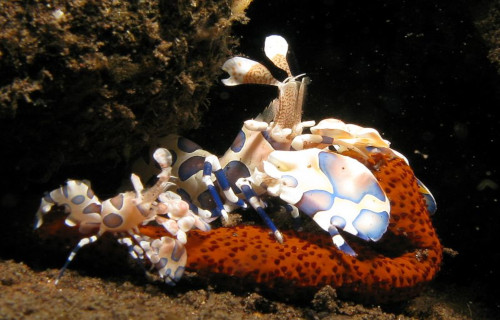
CCL: https://bit.ly/2DuliCV
Harlequin Shrimp Distribution, Habitat, and Ecology
The awesome Harlequin Shrimp, whether it be one species or two, lives in two widely separated areas. These two regions consist of the tropical portions of the Pacific and Indian Oceans.
But, the majority of individuals live in the region around Hawaii. Yet, in all regions, it prefers a specific habitat type. This includes coral reefs below the intertidal zone. It also prefers a highly specific water temperature range.
Additionally, it feeds almost solely on only type of prey. That prey consists of various types of starfish. But, on rare occasions, it will consume sea urchins as well. The animal first turns the hapless victim onto its back, and then proceeds to feed on its feet and other soft tissues.
Meanwhile, it has few natural predators itself. This occurs partly because it sometimes absorb toxins from its prey. This therefore makes its own flesh distasteful, and sometimes deadly, to potential predators.
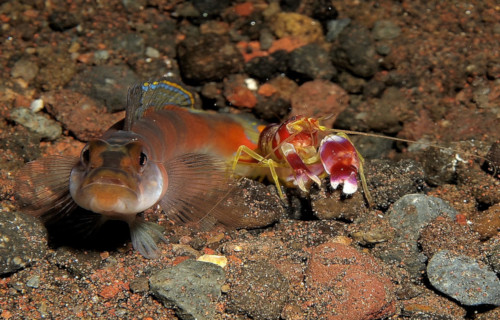
CCL: https://bit.ly/1ryPA8o
We sincerely hope that you have enjoyed this article about 7 Awe-Inspiring Ocean Crustaceans. These amazing creatures fill our oceans, and often play vital roles in their given habitat. However, like many species in the waters of our world, they now find themselves facing serious threats to their continued existence. It is up to us to do all we can to preserve them.
Check out our other articles on 6 Fabulous European Lepidoptera, 5 Natural Marvels of Iceland, 9 Bewildering African Plants, 5 Fabulous Deer Varieties, Earth’s Geothermal Marvels
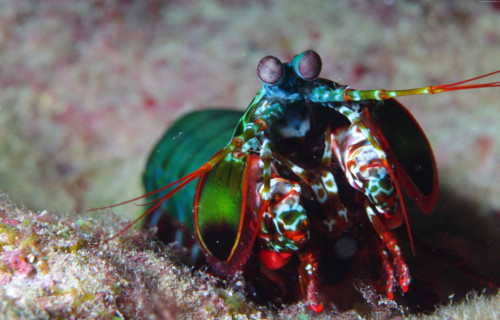
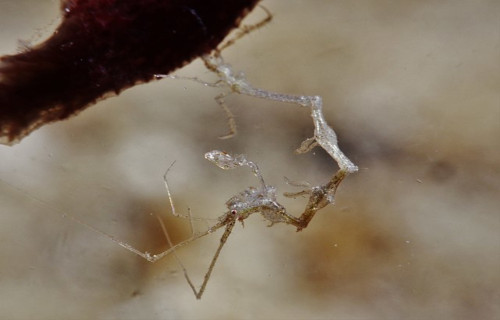
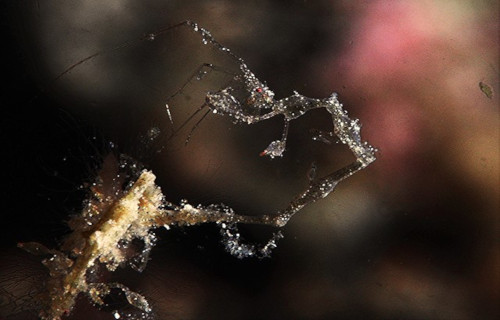
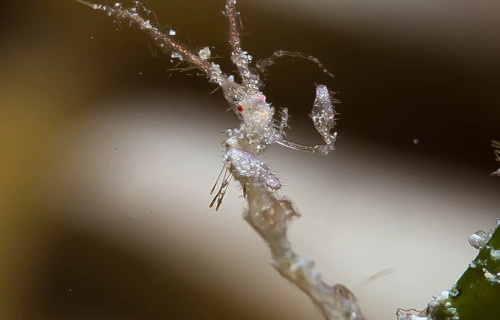
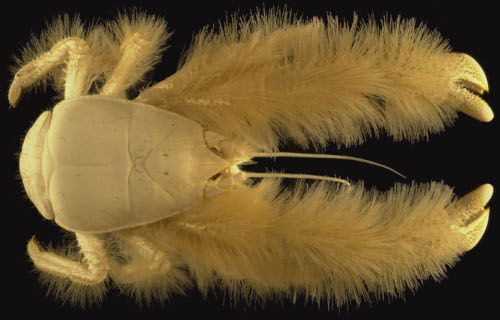
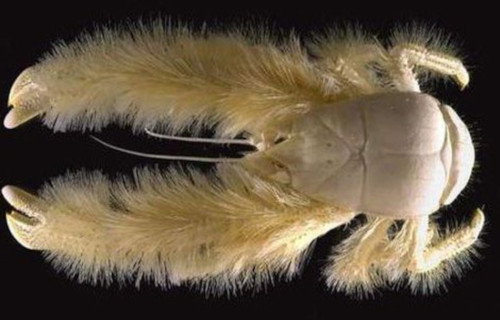
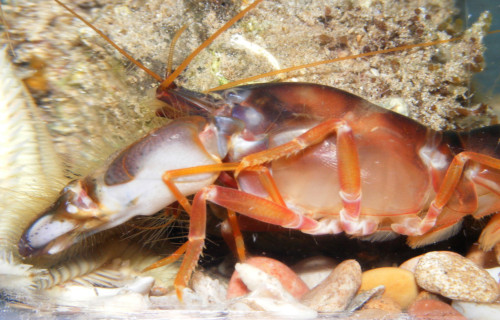

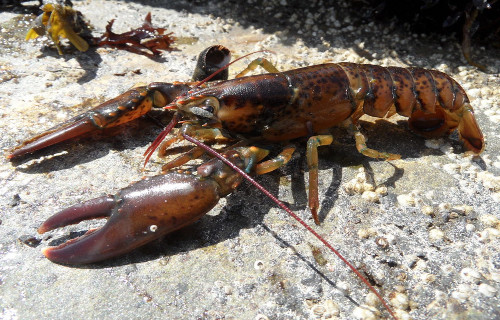
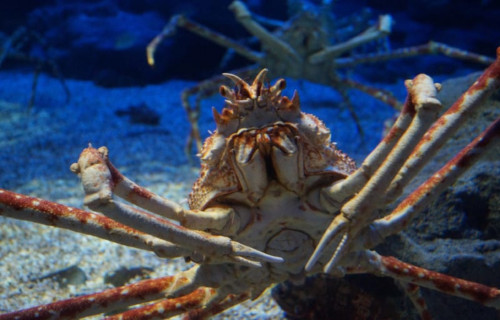
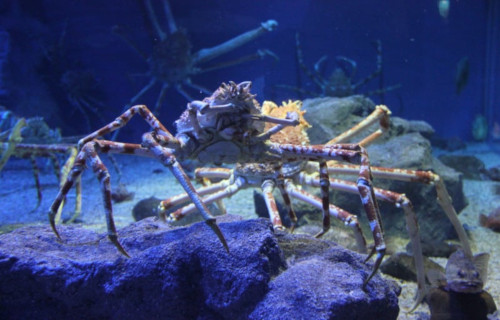









Leave a Reply